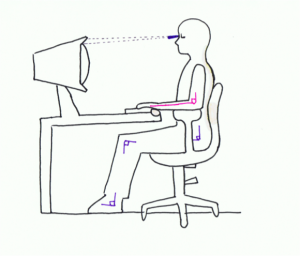Tag: Most Viewed
-

Neck Pain: Where is Your Head Right Now?
Neck pain is one of the most common complaints we see as massage therapists. And in a world where most people spend the majority of their day on a computer, that’s no surprise. In fact, if you’re reading this blog post, you’re on a computer right now. Time for a pop quiz: Where is your…
-

Understanding Hamstring Strains: “POP!”
Hamstring strains, or tears, are a common occurrence in runners and sprinters. There are several contributing factors to hamstring strains and there is a high chance of recurring injury. Strains in the hamstrings are more frequent than in some other muscles for several reasons: muscle imbalance, excessive neural tension (tonus), lack of flexibility, fatigue, and…
-

Plantar Fascitiis
Foot facts! Plantar Fasciitis, what is it? Plantar Fasciitis (PF) is a common foot problem that can cause pain in the arch or heel of the foot. The pain is from inflammation of a band of tissue that runs along the bottom of the foot from the heel to the toes. When the tissue becomes…
-

Temporomandibular Joint Dysfunction (TMJD)
The temporomandibular joint, or, the jaw, is the most frequently used joint in the body – it assists in chewing, swallowing, speaking, yawning, clenching, breathing, even facial expressions… the list goes on. On any given day, the jaw moves 2000-3000 times! The jaw is a sliding hinge joint, allowing for extreme mobility. It moves forward,…
-
IT band syndrome or Why is my IT band sore and what can I do about it !?
Many athletes, especially endurance athletes, suffer from Ilio-Tibial Syndrome (ITBS). ITBS is an inflammation of the Ilio-Tibial band (ITB) at the knee, causing outer knee pain. The causes of ITBS can be varied but the treatment options are usually the same: massage, stretching and strengthening. What causes ITBS? The IT band is a fibrous band…
-
Self-Care Tips to use in-between massage sessions
Getting regular massages has many benefits, but those benefits are tremendously increased if self-care techniques are used in between sessions. This “homework”, given by your therapist, usually includes: hot/cold therapy, stretching, self-massage, lifestyle habits and rest. 1) Hot/cold therapy: Hot therapy: heat helps soothe and relax the muscles, and increases blood flow to the area. It…
-

Proper posture at the office desk
Many of us spend hours a day seated: at the office desk, in the car, in front of the TV, … More often than not, this seated position is a slumped one that can lead to lower back pains, possible disk degeneration and hernias, as well as neck and shoulder pains [1], symptoms sometimes found…



